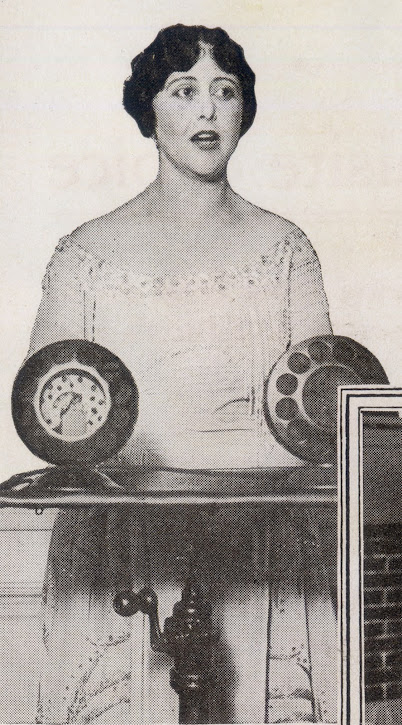Thomas "Tommy" Cowan made his way carefully up the ladder to the hatchway that led to the roof of the Westinghouse plant in Newark, one hand on the iron rungs, the other gently cradling a few Edison records. Just the day before, on September 30, 1921, Tommy had called around to the headquarters of his former employer Thomas Edison in West Orange, hoping to borrow a phonograph and some Diamond Discs. The phonograph, too large to fit through the hatch, had been hauled up the outside of the building and was sitting in the tiny shack that housed the transmitter for one of the nation's first commercial radio stations - WJZ. This was the day of their first official broadcast - and the first record to be played was "Annie Laurie" by Anna Case.
It's possible that Cowan requested the Anna Case disc because of a broadcast that originated from the National Electric Light Association's annual convention in New York on September 28. On that day the former Metropolitan Opera diva and noted concert soprano sang "Ave Maria" and "Oh Mother, My Love" to one of the largest audiences yet in radio's infancy. Hobbyists and enthusiasts, thirsting for any sort of signal on their receivers, tuned in from as far away as Boston, Richmond, and Pittsburgh.
It is estimated that up to five million listeners in the US and Canada were able to tune in, making it by far the largest radio audience up to that time. And that figure probably doesn't include hundreds of fans gathered in the public square in Flemington, where the town set up a primitive public address system to transmit the historic broadcast of the "local girl". Compare that to just four years earlier in 1919 when the twenty-one-year-old Miss Case sang over the radio for the very first from an amateur "wireless" transmitter - station 2ABA located on State Street in Brooklyn. On that day she was heard by perhaps several dozen ships at sea that possessed the expensive radio equipment and a few dedicated amateurs that had the means and the know-how to tune in.
 |
| Anna Case (seated at right) signs a contract with Atwater Kent to appear on the Sunday Night radio broadcasts, 1925. |
 |
| Anna Case with Atwater Kent host and radio pioneer Phillips Carlin. |
Throughout the 1920s and into the 1930s Anna Case could be heard "coast-to-coast" on various radio programs, including a show in 1928 celebrating her twenty years in music. She also featured prominently on the fledgling NBC radio network.
She confessed a fascination for the equipment itself - her younger brother was a radio engineer - desiring to know how each component worked. It could be argued the essential component was the one that made you walk over and turn the radio on for the first time - and that component was Anna Case herself.
She confessed a fascination for the equipment itself - her younger brother was a radio engineer - desiring to know how each component worked. It could be argued the essential component was the one that made you walk over and turn the radio on for the first time - and that component was Anna Case herself.




No comments:
Post a Comment